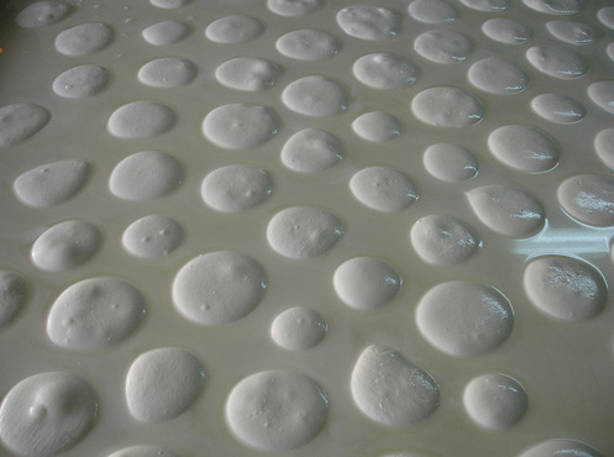


ROME – For the past month the water buffalo has been on its way to becoming Italy’s very own mad cow, and, with losses of some $700,000 daily, a costly symbol of all that can go wrong on even the best-managed farm. These are the buffalo that produce the milk that makes the world’s best cheese, mozzarella di bufala, but evidence from tests of hay, milk and cheese samples showed beyond doubt that some herds are grazing on fields contaminated by dioxin that has seeped into the food chain as a result of the illegal dumping and burning of toxic waste. Total sales have dropped by from 40 to 60%, for total losses estimated at over $40 million.
The resentment in the Campania areas affected, and especially around Caserta north of Naples, is understandably enormous. One sophisticated agribusiness woman, whose impeccable farm is home to 900 water buffalo near Paestum, furiously blamed the press for allegedly inflating the story. Alfonso Pagano, who is a partner in a cheese factory near Aversa, was quoted in the Naples daily Il Mattino Friday protesting, “No product is better controlled that mozzarella. All this talk has brought terrible damage and made us look ridiculous in the eyes of the world.”
Today, the serious boycott threats from Asia and the European Union are being dropped, and it is a safe prediction that mozzarella di bufala will once again be welcome on dinner tables the world over.
But the problem is neither the press nor ridicule. Testing is still going on extremely slowly, but the evidence is that some buffalo milk contains excessive traces of dioxin. Court orders have blocked milk sales from 83 farms and shut down 29 cheese factories in the Campania, many of them small. Eleven farms were cleared, but testing continues, and until it ends, the farmers, who have lost their income, must find a way to finance buying hay to feed the animals. Other farmers who are not yet under investigation fear putting their animals to range into the fields and are keeping them locked in barns.
Since earliest times the Campania, with its mineral-rich volcanic soil and mild climate, has been an agricultural wonderland. In the years before Vesuvius erupted in 79 AD Pliny the Elder praised the bountiful land for its production of two crops a year of some grains. At some unspecified time during the Middle Ages sea voyagers from today’s Pakistan arrived in boats bringing their buffalo with them. The generosity of the land and the skills of the Neapolitan farmers makes the dioxin scare all the worse, for it compromises other Neapolitan farm products: the other cheeses like ricotta, the lemons in limoncello, the prized wines like Falanghina, the tender artichokes, and premium, hand-dried pastas.
But the source of the problem is not the farmer. It is illegal dumping by criminal bands who are in bed with predatory politicians, and this means that the problem is political. Months ago authorities ordered the testing of farms, but for mysterious reasons the tests were not carried out, and no one followed up, which is why the story was broken after dioxin was found after testing exported mozzarellas in Japan. Wealthy Japan was an important client, which began importing buffalo mozzarella only 15 or so years ago; working on a mozzarella story for an American magazine I actually met one enthusiastic early Japanese delegation, which had just joyfully discovered insalata caprese—mozzarella and sliced tomato. Since the Japanese did not normally eat cheese, the successful mozzarella penetration of the tofu market was a coup.
All this was compromised by the men dumping toxic waste from not only Neapolitan, but North Italian and even North European factories, whose owners turned a blind eye to what was going on in order to rid themselves of an intractable problem.
Besides clandestine dumps, some legal dumps are also problematic. Two examples: near Eboli a legal dump can be seen, or rather, its cover, an immense and flimsy dark green tarp. As a Neapolitan journalist explained, a rubbish dump permit was issued, and a new road built so that it could be accessed. So much rubbish was brought there daily so that the traffic to the new road was considerable. Within a year the dump was completely filled. It and its new road were abandoned, but still there.
The second example is a volcanic crater near Pozzuoli. During the Fifties the Senga crater and a side crater on a wooded mountain were legally chosen for use as a rubbish dump even though on a slope inside the crater were vestiges of an ancient building with painted stucco walls dating back to the Roman Empire. Local farmers and residents protested, but the administration ignored them, and a road was built so that trucks could haul the rubbish there. As the years passed neighbors complained of the poisonous fumes emanating from this dump, but no one paid attention. Pigs fed upon the rubbish; the poorest of the poor collected what they could. But eventually the craters were full, and so nearby land ever closer to the famous and historical Campi Flegrei was also taken, until that too was filled, according to a report published in 1986 by the late naturalist Roberto Pane in the magazine Napoli nobilissimo.
It is fervently to be hoped that something better will come of this than followed the protests of two decades ago—that irate citizens will refuse to elect those politicians who operated hand-in-knuckleduster with the crooks who made their money by selling out the Neapolitan farmers.
P.S. Naturally, ten minutes after I sent this in, the Chinese announced a total boycott of mozzarella (which they do not in fact import, but what the heck, you don't like our mercurial toys, we denounce your dioxin mozzarella). It doesn't change the situation: the Chinese - if they tested anything - may have been testing counterfeit mozzarella, a whole 'nother story.
Source URL: http://test.casaitaliananyu.org/magazine/focus/facts-stories/article/mozzarella-politics-naples-italy
Links
[1] http://test.casaitaliananyu.org/files/1542mozzarella001206857553jpg